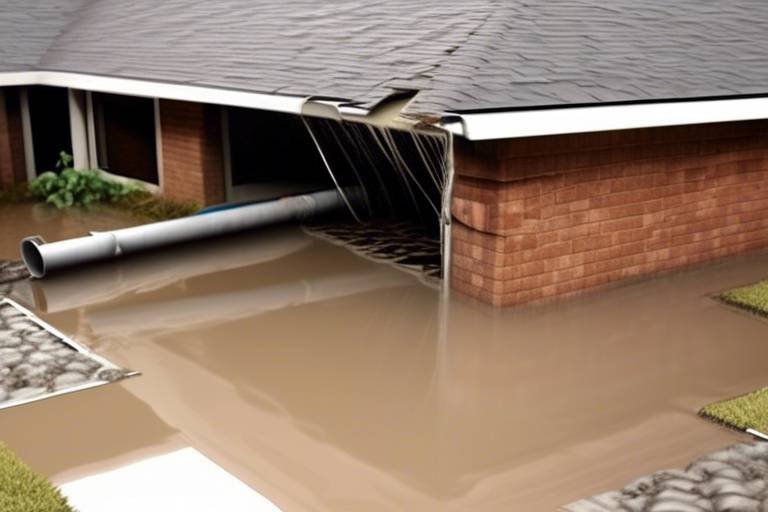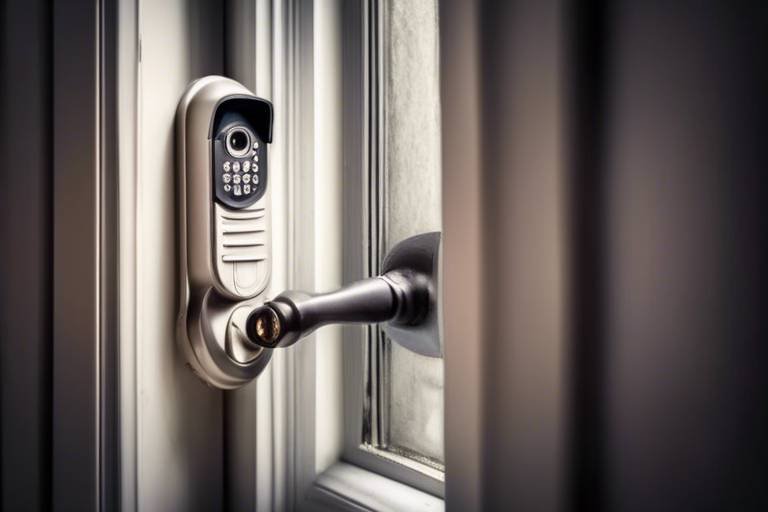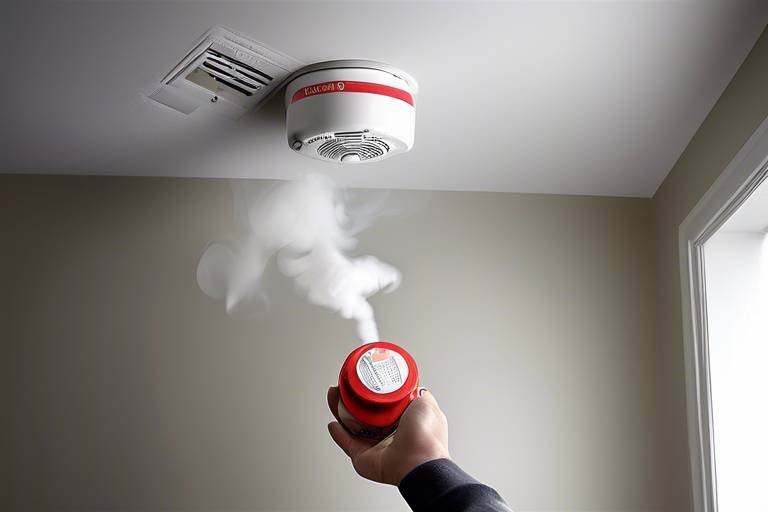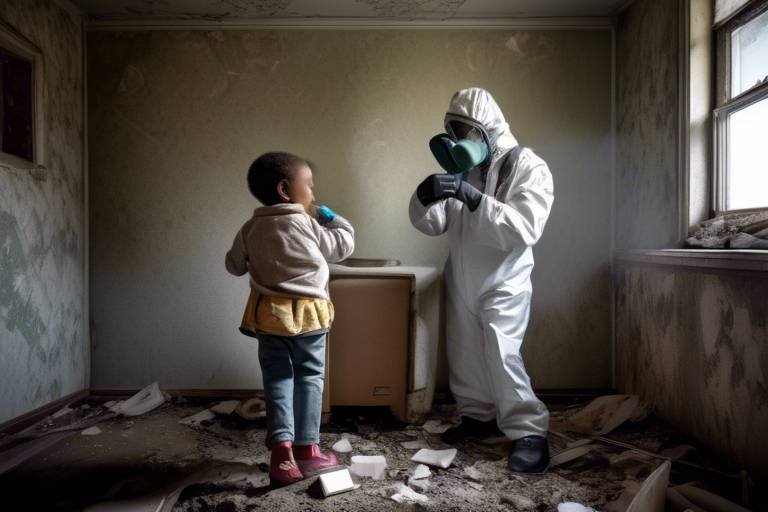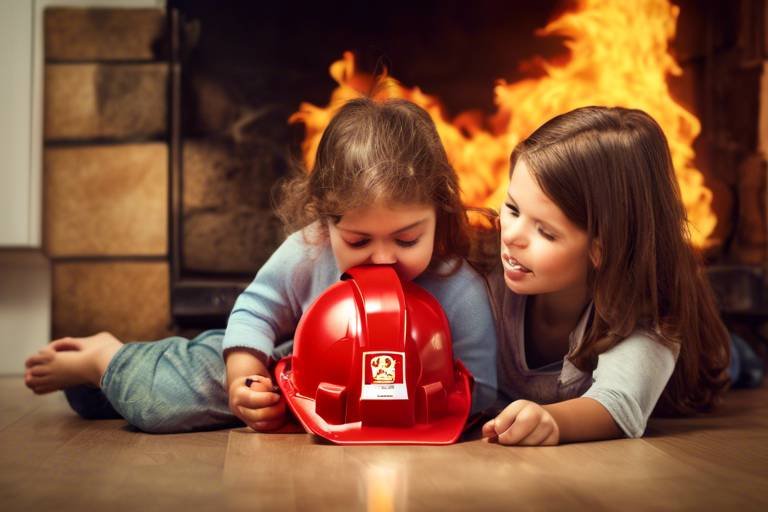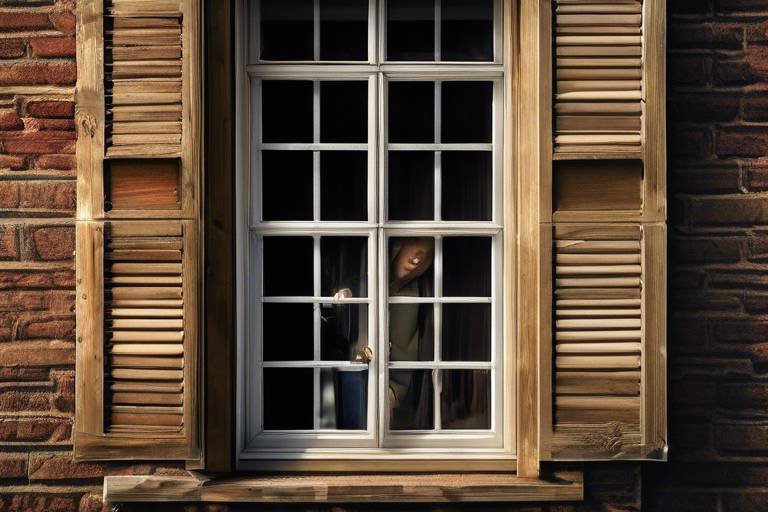Drainage Issues in Homes - Safety Concerns
When we think about our homes, we picture cozy rooms, family gatherings, and a safe haven from the outside world. However, lurking beneath the surface, there are potential threats that can undermine this sanctuary. One of the most significant yet often overlooked issues is drainage. Drainage problems in homes can lead to a myriad of safety concerns, ranging from structural damage to health hazards. This article delves into the common drainage problems homeowners face, the associated risks, and effective solutions to mitigate these dangers.
To truly grasp the importance of drainage in our homes, we must first understand how these systems work. A residential drainage system is designed to manage water flow, directing it away from your property to prevent flooding and water damage. Key components include gutters, downspouts, drains, and the grading of the land. Proper installation and regular maintenance of these systems are crucial. If neglected, even minor issues can escalate, leading to significant safety concerns. Imagine your home as a well-oiled machine; if one part fails, the entire system can suffer.
Homeowners often encounter several common drainage issues that can compromise safety. These include:
- Clogs: Blockages in pipes can lead to water backup, which can damage walls, floors, and foundations.
- Leaks: Leaking pipes can cause water damage and foster mold growth, posing health risks.
- Improper Grading: If the land around your home doesn’t slope away properly, it can lead to water pooling near the foundation.
Each of these problems has its own set of causes and potential risks, making it essential for homeowners to be vigilant.
Clogged drains are a prevalent issue that can lead to water backup, structural damage, and health hazards. Understanding their causes can help in prevention and timely resolution. A clogged drain is often the result of debris accumulation, grease buildup, or foreign objects entering the pipes. When water can’t flow freely, it creates a backlog that can overflow and damage your home. Imagine a dam bursting; the pressure builds until it can no longer be contained.
Recognizing the early signs of clogged drains is crucial. Homeowners should be on the lookout for:
- Slow drainage in sinks, tubs, or toilets.
- Unpleasant odors emanating from drains.
- Gurgling sounds in pipes.
By identifying these signs early, homeowners can take immediate action before the problem escalates into a more severe issue.
Implementing preventive measures, like regular cleaning and using drain covers, can significantly reduce the risk of clogs. It’s akin to regular exercise for your home; just as we maintain our health, we must also maintain our drainage systems. Simple practices such as flushing drains with hot water or using enzyme-based cleaners can keep pipes clear and functional.
Leaking pipes can cause significant water damage and mold growth within homes. Identifying sources of leaks early can prevent costly repairs and health issues. A small leak may seem insignificant, but over time, it can lead to extensive water damage and create an environment ripe for mold growth. Think of a tiny crack in a dam; if left unchecked, it could lead to a catastrophic failure.
Poor drainage can lead to various health risks, including mold growth and standing water, which can attract pests and create unsanitary conditions within the home. Mold thrives in damp environments, making poorly drained areas susceptible to infestation. Understanding mold's health impacts is crucial for maintaining a safe living space. Additionally, standing water can become a breeding ground for mosquitoes and other pests, posing further health risks.
Mold can be a silent invader, often going unnoticed until it has caused significant damage. It can lead to respiratory issues, allergic reactions, and other health problems. Homeowners should be proactive in addressing drainage issues to prevent mold from taking hold. Regular inspections and prompt repairs can help keep your home mold-free.
Standing water and poor drainage can attract pests like mosquitoes and rodents, posing additional health risks. These pests can carry diseases and create an unsanitary environment. Effective drainage solutions can help mitigate these infestations, ensuring your home remains a safe and healthy space.
Exploring effective solutions for common drainage problems is essential for maintaining a safe and functional drainage system. Homeowners should consider engaging professionals for a thorough assessment of drainage issues. These experts can provide tailored solutions, ensuring that your home is protected from the dangers of poor drainage.
Engaging professionals for a thorough assessment of drainage issues can provide homeowners with peace of mind regarding their home's safety. A professional can identify underlying problems that may not be immediately visible, offering solutions that are both effective and long-lasting.
Making strategic landscaping changes, such as regrading and installing drainage systems, can improve water flow and reduce the risk of drainage-related problems in residential areas. Think of it as giving your home a makeover; just as a fresh coat of paint can rejuvenate a room, proper landscaping can revitalize your drainage system.
Q: How often should I check my drainage system?
A: It's advisable to inspect your drainage system at least twice a year, especially before and after heavy rainfall.
Q: What are the signs that I need professional help with my drainage?
A: If you notice persistent water pooling, foul odors, or frequent clogs, it's time to call a professional.
Q: Can I prevent mold growth in my home?
A: Yes, maintaining proper drainage, controlling humidity levels, and promptly addressing leaks can help prevent mold growth.

Understanding Drainage Systems
When it comes to maintaining a safe and comfortable home, understanding drainage systems is absolutely essential. These systems are designed to manage the flow of water away from your property, preventing issues like flooding and water damage. A well-functioning drainage system is made up of several key components, each playing a vital role in ensuring that water is directed away from your home efficiently.
At the core of any drainage system are the drainage pipes, which transport water away from your property. These pipes are typically buried underground and can be made from various materials, including PVC, clay, or concrete. The choice of material can impact the durability and effectiveness of the drainage system. Additionally, there are drainage basins that collect excess water, especially during heavy rainfalls. These basins help to prevent water from pooling around the foundation of your home.
Another crucial component is the gravel or rock layer that surrounds the drainage pipes. This layer aids in filtering out debris and allows water to flow freely into the pipes. Proper installation of these components is critical; if they are not positioned correctly, it can lead to serious drainage issues down the line. For instance, if the grading of your yard is incorrect, water may flow towards your home instead of away from it, increasing the risk of flooding.
To maintain an effective drainage system, regular maintenance is required. This includes cleaning out gutters, checking for clogs in the pipes, and ensuring that the grading of your yard is appropriate. Homeowners should also be aware of any changes in their landscape that could affect drainage, such as new plantings or constructions. By staying proactive, you can prevent small issues from escalating into major problems.
In summary, understanding how your drainage system works and the importance of its components can significantly impact your home's safety and longevity. A little knowledge goes a long way in preventing drainage-related issues, ensuring that your home remains a safe haven for you and your family.
- What are the signs of a failing drainage system? Look for water pooling around your foundation, slow drainage in sinks, or unpleasant odors.
- How often should I inspect my drainage system? It's wise to check your system at least twice a year, especially before heavy rain seasons.
- Can I fix drainage issues myself? Minor issues can often be resolved with DIY methods, but severe problems may require professional help.
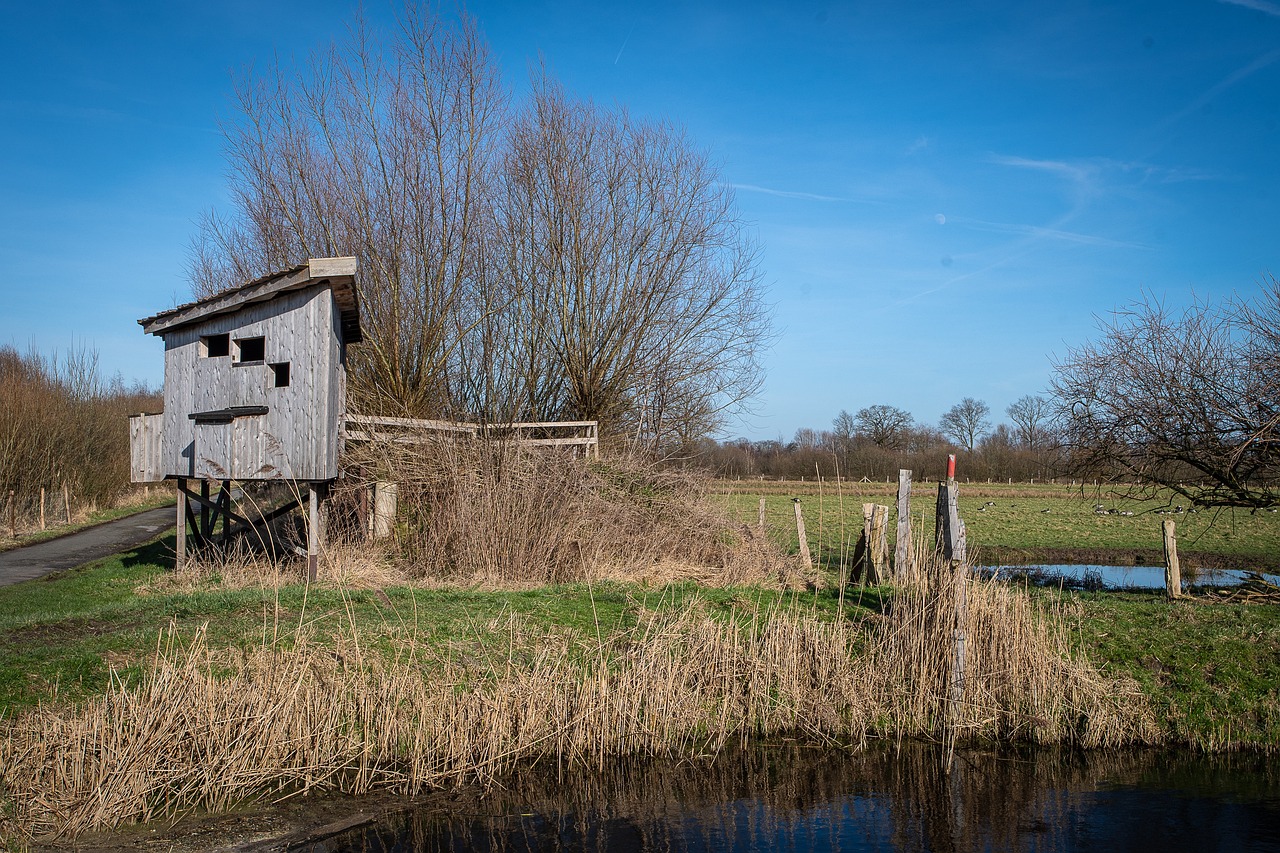
Common Drainage Problems
Homeowners often face a variety of drainage problems that can lead to serious consequences if not addressed promptly. These issues, ranging from minor annoyances to major hazards, can stem from various sources, including poor installation, lack of maintenance, or even environmental factors. Understanding these common drainage problems is crucial for safeguarding your home and ensuring a healthy living environment. Let’s dive into some of the most frequent issues that homeowners encounter.
One of the most prevalent drainage issues is clogged drains. These pesky blockages can occur in sinks, showers, and toilets, leading to water backup that can damage your property and create unsanitary conditions. Clogs can be caused by a variety of factors, including:
- Accumulation of hair, soap, and grease
- Foreign objects accidentally flushed down toilets
- Tree roots infiltrating underground pipes
When water starts to pool in your sink or shower, it’s a clear sign that you may have a clog. This not only disrupts daily activities but can also lead to more severe plumbing issues if left unattended.
Recognizing the early signs of clogged drains is essential for preventing further complications. Some common indicators include:
- Slow drainage: Water taking longer than usual to flow down the drain.
- Unpleasant odors: A foul smell emanating from drains can signal a blockage.
- Gurgling sounds: Noises coming from pipes can indicate trapped air due to clogs.
If you notice any of these signs, it’s time to take action before the problem escalates into a more significant issue.
Implementing preventive measures can significantly reduce the risk of clogs. Regular cleaning of drains, using drain covers, and being mindful of what goes down your sinks and toilets can help maintain a functional drainage system. Consider scheduling a professional cleaning at least once a year to keep things flowing smoothly.
Another common issue is leaking pipes. These leaks can lead to substantial water damage, mold growth, and increased utility bills. They often go unnoticed until they cause significant problems, making early detection crucial. Leaks may occur due to:
- Corrosion of old pipes
- Poor installation practices
- Extreme temperature fluctuations
Identifying the source of a leak can prevent costly repairs and health hazards. Look out for water stains on walls or ceilings, damp spots on floors, or an unexplained increase in your water bill.
In summary, understanding these common drainage problems is the first step toward effective prevention and resolution. Whether it’s dealing with clogged drains or leaking pipes, being proactive can save you time, money, and stress in the long run. Remember, a well-maintained drainage system is essential for the safety and comfort of your home.
Q: How can I prevent clogged drains?
A: Regular cleaning, using drain covers, and being cautious about what you dispose of in your drains can help prevent clogs.
Q: What should I do if I notice a leak?
A: It’s best to address leaks immediately. Turn off the water supply and contact a professional plumber for assessment and repairs.
Q: How often should I have my drainage system inspected?
A: It’s advisable to have your drainage system inspected at least once a year to catch any potential issues early.

Clogged Drains
Clogged drains are a prevalent issue that can lead to a cascade of problems in your home, from minor inconveniences to severe water damage. Imagine waking up one morning to find your bathroom sink filled with water that just won’t go down. Frustrating, right? This common household headache often stems from various causes, including hair, soap residue, food particles, and grease buildup. While these may seem like trivial culprits, they can create a domino effect, leading to water backup, structural damage, and even health hazards if not addressed promptly.
Understanding the causes of clogged drains is essential for prevention. For instance, hair is notorious for creating blockages in shower drains, while grease can solidify in kitchen pipes, forming a stubborn clog that’s hard to dislodge. Other factors include foreign objects accidentally dropped into sinks or toilets, and tree roots infiltrating underground pipes. Recognizing these causes can help homeowners take proactive steps to mitigate the risk of clogs.
So, how do you know if your drains are starting to clog? There are several telltale signs to watch for. If you notice that water is draining slowly or if you’re greeted by unpleasant odors wafting from your sink or shower, it’s time to take action. Ignoring these signs can lead to more significant issues down the line. The longer you wait, the more likely you are to face a complete blockage, which can result in costly repairs and a headache that could have been easily avoided.
Fortunately, there are simple preventive measures that can significantly reduce the risk of clogs. Regular cleaning is key; consider using a mixture of baking soda and vinegar to keep your drains clear. Additionally, investing in drain covers can catch hair and larger debris before they have a chance to enter your pipes. Think of it as a safety net for your plumbing system! By being proactive, you can maintain a functional drainage system and avoid the stress that comes with clogged drains.
In summary, clogged drains are more than just a nuisance—they can pose serious risks to your home and health. By understanding their causes and recognizing the early signs, you can take effective preventive measures to keep your drains flowing smoothly. Remember, a little maintenance goes a long way in ensuring the longevity of your plumbing system!
- What are the common causes of clogged drains? - Hair, grease, soap residue, food particles, and foreign objects are typical culprits.
- How can I tell if my drain is clogged? - Signs include slow drainage, unpleasant odors, and gurgling sounds.
- What preventive measures can I take? - Regular cleaning, using drain covers, and avoiding pouring grease down the sink can help.
- When should I call a professional? - If you notice persistent clogs or if DIY methods fail, it's best to consult a plumbing expert.

Signs of Clogs
Clogged drains can be a real nuisance, and catching them early can save you from a world of headaches. So, how do you know if your drains are starting to back up? There are several signs you should be on the lookout for. First and foremost, if you notice water draining slowly, that’s a red flag. Imagine trying to pour a drink into a glass, but it just won’t fill up because the bottom is blocked. That’s exactly what happens in your pipes when a clog forms.
Another telltale sign is the presence of unpleasant odors. If your kitchen or bathroom starts to smell like a swamp, it’s time to investigate. This odor often indicates stagnant water and decomposing debris trapped in your pipes. It’s not just an olfactory annoyance; it can also signal potential health risks lurking in your home.
Additionally, gurgling sounds can be an alarming indicator of a clog. When air is trapped in the pipes due to a blockage, it can create a symphony of strange noises that echo through your plumbing. Think of it as your plumbing system trying to communicate with you—unfortunately, it’s not saying anything pleasant!
Here are a few more signs to keep an eye on:
- Multiple Fixtures Affected: If you notice that more than one drain is slow or gurgling, it could mean a larger issue in your main sewer line.
- Water Backing Up: If water starts to back up in your bathtub or sink when using another fixture, that’s a clear signal that something is wrong.
- Visible Debris: Sometimes, you might spot debris or standing water around your drains, indicating that a clog is forming.
Being proactive about these signs can save you from costly repairs down the line. If you observe any of these symptoms, it’s best to act quickly to prevent a minor inconvenience from turning into a major plumbing disaster.
Q: How often should I clean my drains to prevent clogs?
A: Regular cleaning every few months is ideal, but it depends on how frequently you use your drains. If you notice slow drainage or foul odors, it might be time for a cleaning.
Q: Can I use chemical drain cleaners to fix clogs?
A: While chemical drain cleaners can be effective, they can also damage your pipes over time. It’s better to use natural solutions or consult a professional for severe clogs.
Q: What should I do if I notice multiple drains clogging at once?
A: This could indicate a blockage in your main sewer line. It’s best to call a plumber immediately to assess the situation and avoid further damage.

Preventive Measures
When it comes to maintaining a functional drainage system, **prevention is key**. By implementing simple yet effective preventive measures, homeowners can significantly reduce the risk of clogs and other drainage issues. First and foremost, regular cleaning of drains is essential. This doesn’t just mean a quick rinse; it involves a thorough inspection and removal of any debris that may have accumulated over time. Think of it like brushing your teeth—if you neglect it, you’re bound to face some unpleasant consequences!
Another effective strategy is the use of drain covers or screens. These handy devices act as a first line of defense against larger debris, such as leaves and food particles, which can easily lead to blockages. Just like a good bouncer at a club, they keep unwanted guests out of your drainage system. Make it a habit to check these covers regularly to ensure they’re not clogged themselves.
Moreover, it’s important to be mindful of what goes down your drains. Avoid flushing items that don’t belong there, such as wipes, grease, and hair. These materials can create major blockages that are not only annoying but can also lead to costly repairs. Instead, consider using a **drain strainer** in sinks and showers to catch hair and food particles before they can cause problems.
Lastly, seasonal maintenance can be a game changer. Before the heavy rains or snowmelt, inspect your drainage system to ensure it’s functioning properly. This includes checking gutters, downspouts, and any outdoor drains. If you notice any issues, address them before they escalate. By staying proactive, you can save yourself a lot of hassle down the road.
In summary, a little bit of attention goes a long way in preventing drainage issues. By cleaning regularly, using protective covers, being mindful of what you dispose of, and conducting seasonal checks, you can keep your drainage system in top-notch shape. Remember, it’s always easier to prevent a problem than to fix one!
- What are the signs of a clogged drain? Look for slow drainage, gurgling sounds, and unpleasant odors as indicators of a potential clog.
- How often should I clean my drains? Ideally, you should perform a thorough cleaning at least once every few months, or more frequently if you notice any signs of clogs.
- Can I use chemical drain cleaners? While they can be effective, frequent use of chemical cleaners can damage your pipes. It's best to use them sparingly and opt for natural cleaning methods when possible.
- What should I do if I have a persistent clog? If regular cleaning and preventive measures don’t work, it’s time to call a professional plumber to assess the situation.

Leaking Pipes
Leaking pipes are more than just a minor inconvenience; they can turn into a homeowner's worst nightmare if left unchecked. Imagine waking up one morning to find your basement flooded or discovering a damp patch on your wall that seems to grow larger by the day. The reality is that leaking pipes can lead to significant water damage, which not only compromises the structural integrity of your home but can also pave the way for mold growth and pest infestations. These issues can escalate quickly, resulting in costly repairs and a potential health hazard for you and your family.
So, what causes those pesky leaks? There are several culprits to consider:
- Corrosion: Over time, pipes can corrode due to chemical reactions with water, leading to small holes that allow water to escape.
- Temperature Changes: Fluctuations in temperature can cause pipes to expand and contract, which may lead to cracks or leaks.
- Improper Installation: If pipes are not installed correctly, they may not fit together snugly, leading to leaks at the joints.
- High Water Pressure: Excessive pressure can strain pipes, causing them to burst or leak.
Identifying the source of a leak early is crucial. Look for signs like water stains on walls or ceilings, damp spots on floors, or an unexplained increase in your water bill. If you notice any of these indicators, it’s time to take action. Ignoring the problem can lead to more severe consequences, including extensive water damage and mold growth, which can have serious health implications.
To prevent leaks, regular maintenance is key. Here are some tips:
- Inspect your plumbing system periodically for visible signs of wear and tear.
- Ensure that your home’s water pressure is within a safe range.
- Consider insulating pipes in areas prone to extreme temperatures.
- Schedule professional inspections to catch potential issues before they escalate.
In conclusion, leaking pipes are not just a minor issue; they can lead to a cascade of problems that affect both your home and your health. By being vigilant and proactive in addressing leaks, you can protect your property and maintain a safe living environment. Don't wait until it's too late—take the necessary steps to ensure your plumbing system remains in top condition.
Q: How can I tell if I have a leak in my pipes?
A: Look for signs such as water stains, damp spots, or an unexplained increase in your water bill. You can also listen for dripping sounds or check your water meter for unusual activity.
Q: What should I do if I find a leak?
A: It's best to turn off the water supply to prevent further damage and contact a professional plumber to assess the situation.
Q: Can I fix a leaking pipe myself?
A: Minor leaks can sometimes be fixed with plumbing tape or sealant, but for significant leaks, it's advisable to hire a professional to ensure a proper and lasting repair.
Q: How can I prevent future leaks?
A: Regular maintenance, proper installation of pipes, and monitoring your water pressure can help prevent leaks from occurring in the future.

Health Risks Associated with Poor Drainage
Poor drainage systems can lead to a plethora of health risks that are often overlooked by homeowners. When water does not flow away from your property as it should, it can create conditions that foster the growth of harmful organisms and attract unwanted pests. Imagine walking into your home and being greeted by the musty smell of mold or the buzzing of mosquitoes; it’s not just unpleasant, but it can also be detrimental to your health. The importance of addressing drainage issues cannot be overstated, as they can lead to serious consequences for your family's well-being.
One of the most significant health risks associated with poor drainage is the proliferation of mold. Mold thrives in damp and dark environments, making areas with poor drainage the perfect breeding ground. When mold spores become airborne, they can trigger a range of health issues, particularly for those with asthma or allergies. Symptoms can include coughing, sneezing, skin irritation, and in severe cases, respiratory problems. According to the Environmental Protection Agency (EPA), exposure to mold can lead to serious health complications, especially for vulnerable populations such as children and the elderly.
Another serious concern is pest infestations. Standing water and improperly drained areas can attract pests like mosquitoes, rodents, and other insects. Mosquitoes are not just a nuisance; they can carry diseases such as West Nile virus and Zika virus. Rodents, on the other hand, can bring additional health risks as they are known carriers of various diseases, including hantavirus and leptospirosis. The presence of these pests can create an unsanitary environment, further compounding the health risks associated with poor drainage.
To illustrate the potential health risks, consider the following table that summarizes the health hazards linked to poor drainage:
| Health Risk | Description |
|---|---|
| Mold Growth | Can cause respiratory issues, allergic reactions, and other health complications. |
| Pest Infestations | Increased risk of diseases transmitted by mosquitoes and rodents. |
| Structural Damage | Water accumulation can lead to weakened foundations and increased repair costs. |
In summary, neglecting drainage issues can have dire consequences for your health and safety. It's essential to regularly inspect your drainage systems and address any problems promptly. Taking proactive measures not only protects your property but also safeguards your family's health. After all, a healthy home is a happy home!
- What are the common signs of poor drainage? Look for water pooling, mold growth, and unpleasant odors.
- How can I prevent drainage issues? Regular maintenance, cleaning gutters, and ensuring proper landscaping can help.
- When should I call a professional? If you notice persistent drainage problems or signs of water damage, it's best to consult a professional.
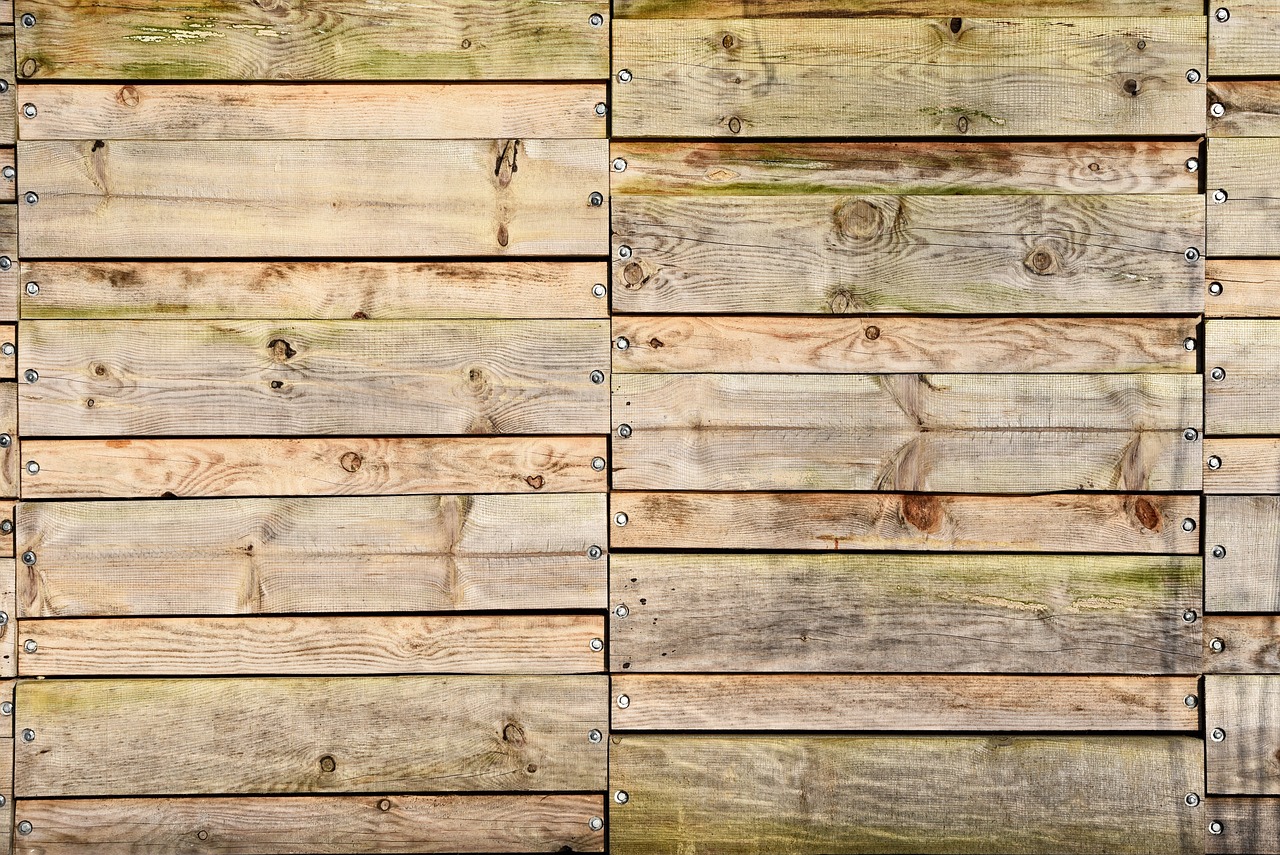
Mold Growth
Mold growth is a common yet often overlooked issue that can arise from poor drainage systems in homes. When water accumulates in areas where it shouldn't, it creates the perfect breeding ground for mold spores. These spores thrive in damp, dark environments, and once they find a suitable spot, they can multiply rapidly, leading to significant health risks for the occupants. Imagine your home as a fortress; if there’s a crack in the walls allowing moisture to seep in, the fortress becomes vulnerable to invaders—mold being one of the most insidious.
The health impacts of mold are not to be taken lightly. Exposure to mold can lead to a variety of respiratory issues, allergic reactions, and even serious illnesses. Symptoms might include coughing, sneezing, and skin irritations, which can escalate into chronic conditions if left unaddressed. For individuals with asthma or other respiratory conditions, mold exposure can trigger severe attacks, making it crucial to maintain a mold-free environment.
To combat mold growth effectively, homeowners must first understand the conditions that foster its development. Key factors include:
- Humidity: High levels of humidity, particularly above 60%, create an ideal environment for mold.
- Water Sources: Leaks from roofs, pipes, or even condensation can lead to moisture accumulation.
- Poor Ventilation: Areas with limited airflow, such as basements and attics, are prone to mold growth.
Preventing mold requires a proactive approach. Regular inspections of your home, especially in areas prone to moisture, can help catch problems before they escalate. If you notice any signs of mold, such as a musty smell or visible patches, it’s essential to act quickly. Cleaning up small areas of mold can often be done with a mixture of water and detergent, but larger infestations may require professional remediation. Remember, while mold might seem like a minor nuisance, it can lead to major health issues and costly repairs if not addressed promptly.
- How can I tell if I have mold in my home? Look for visible patches, a musty smell, or signs of water damage.
- What should I do if I find mold? Clean small areas with soap and water or a commercial mold remover. For larger infestations, consider hiring a professional.
- How can I prevent mold from growing? Keep humidity levels below 60%, ensure proper ventilation, and fix any leaks promptly.
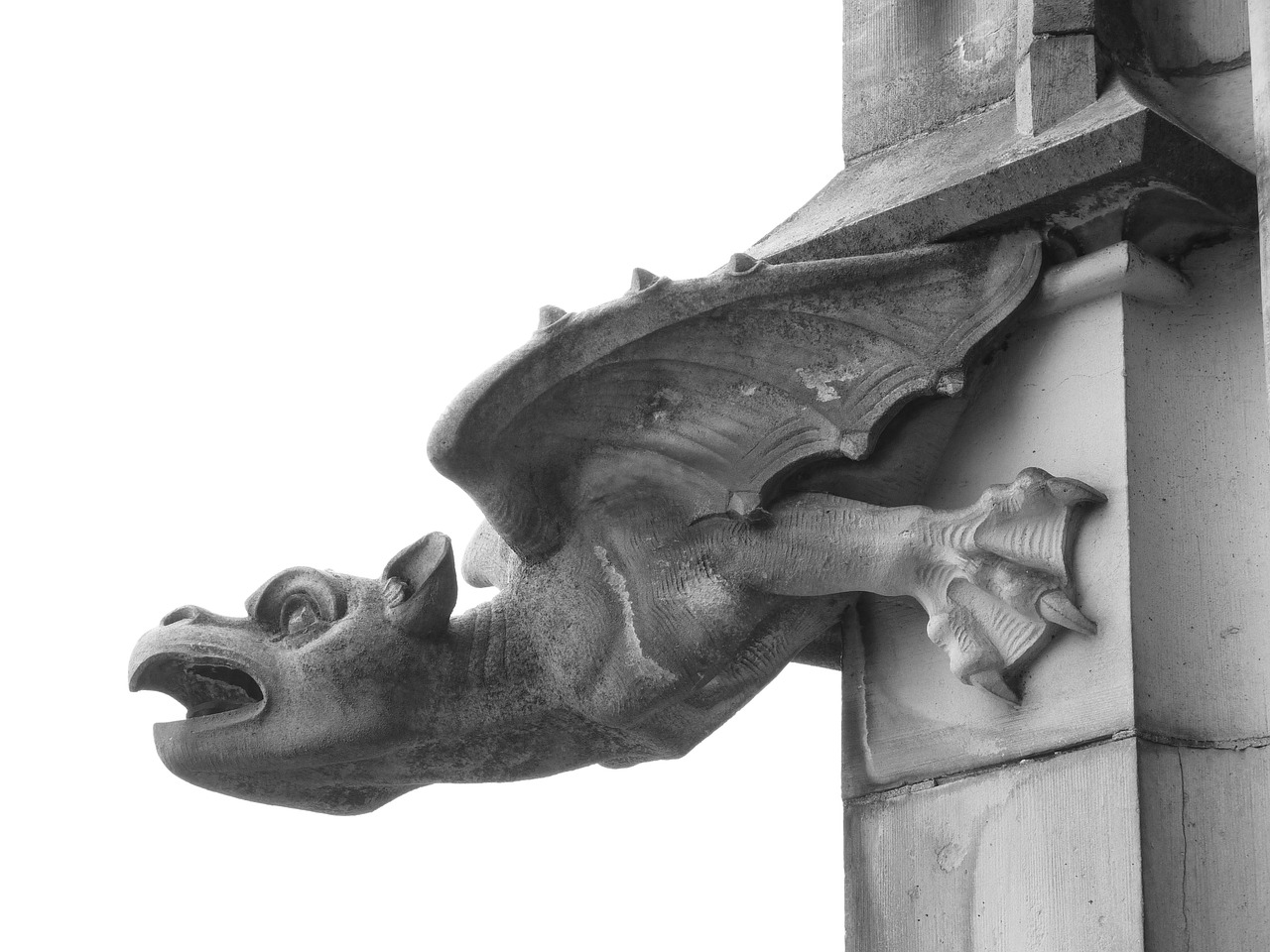
Pest Infestations
Pest infestations are a serious concern for homeowners, particularly when poor drainage systems are involved. Standing water and damp areas around your home can become a breeding ground for various pests, including mosquitoes, rodents, and even termites. Imagine your home as a fortress; if the moat surrounding it is filled with stagnant water, it becomes an inviting habitat for unwelcome guests. Not only do these pests disrupt your peace of mind, but they can also pose significant health risks to you and your family.
One of the most notorious culprits of pest infestations linked to drainage issues is the mosquito. These pesky insects thrive in standing water, where they lay their eggs. A single female mosquito can produce hundreds of eggs in just a few days, leading to a rapid increase in their population. Beyond just being annoying, mosquitoes are known carriers of diseases such as West Nile Virus and Zika Virus, making their presence a serious health concern.
Rodents, such as rats and mice, are another group that can be attracted to poorly drained areas. They are not only looking for food and shelter but also for moisture, which they can find in damp basements or crawl spaces. These rodents can carry various diseases and can contaminate food sources, leading to further health risks. A study by the CDC highlights that rodent infestations can lead to illnesses like hantavirus pulmonary syndrome and leptospirosis. Therefore, addressing drainage issues is crucial for keeping these critters at bay.
To combat pest infestations associated with poor drainage, homeowners can take several proactive steps:
- Regularly inspect and maintain your drainage systems to prevent standing water.
- Ensure proper landscaping that directs water away from your home.
- Consider installing drainage solutions like French drains or dry wells to manage excess water.
- Keep gutters and downspouts clean and directed away from the foundation.
By implementing these measures, you can significantly reduce the risk of pest infestations and maintain a healthier living environment. Remember, a well-maintained drainage system is not just about preventing water damage; it's also about safeguarding your home from the unwanted guests that thrive in damp conditions.
Q: What are the signs of a pest infestation?
A: Common signs include droppings, gnaw marks, nests, and the presence of pests themselves. If you notice any of these, it's time to take action!
Q: How can I prevent mosquitoes from breeding around my home?
A: Eliminate standing water, regularly clean gutters, and consider using mosquito repellents or traps in your yard.
Q: Should I contact a professional for pest control?
A: Yes, if you suspect a significant infestation, it's best to consult with pest control experts who can provide tailored solutions to your specific situation.
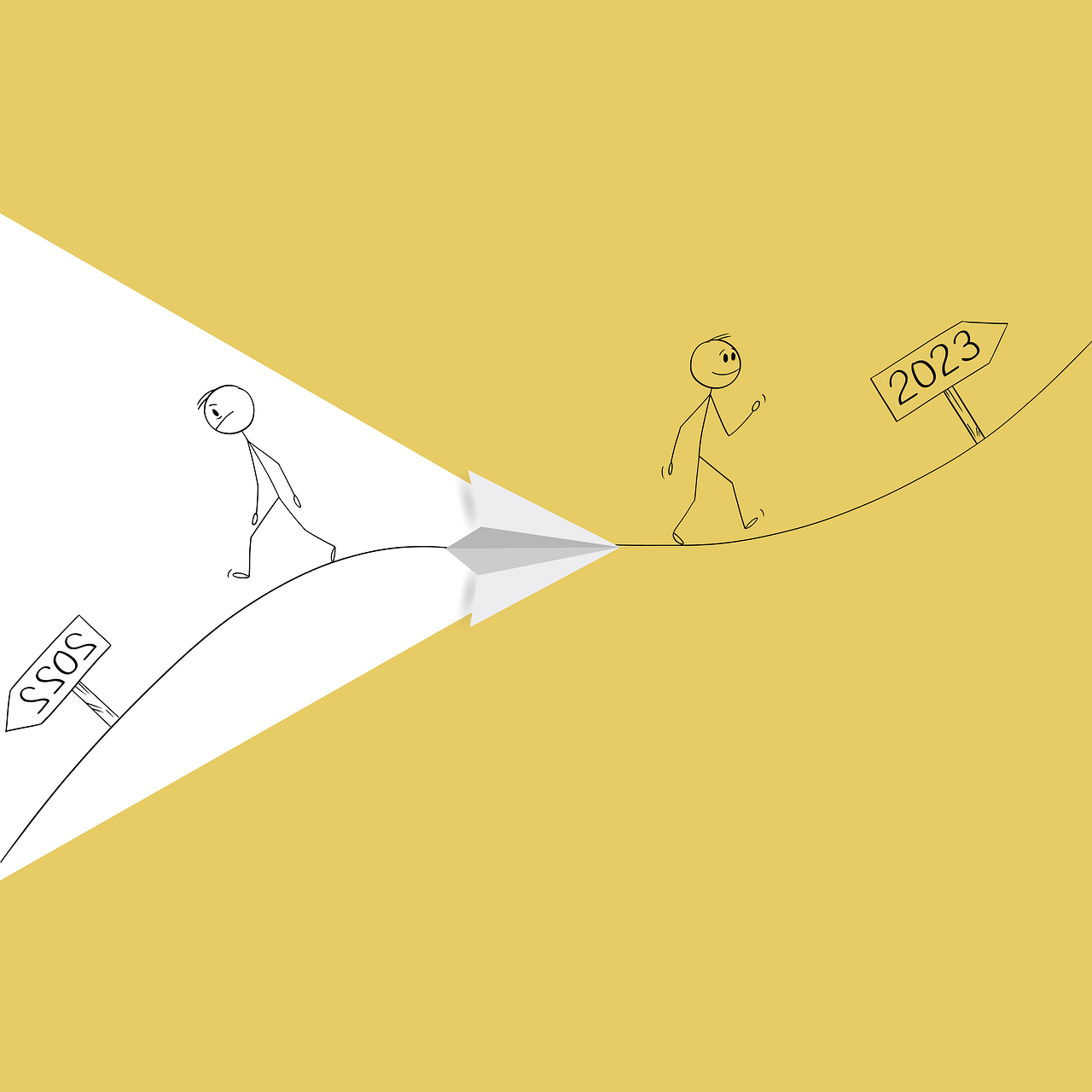
Solutions for Drainage Issues
When it comes to tackling drainage issues, the approach you take can make all the difference in ensuring the safety and functionality of your home. Thankfully, there are several effective solutions that homeowners can implement to mitigate these problems and protect their property. First and foremost, professional assessment is crucial. Engaging a qualified drainage specialist can provide you with a thorough evaluation of your drainage system. They can identify underlying issues that you might not even be aware of, offering tailored solutions that suit your specific needs. This proactive measure can save you from costly repairs down the line and give you peace of mind knowing that your home is safe.
Another effective solution is making landscaping adjustments. Often, the way your yard is graded can significantly impact drainage. If the ground slopes toward your home, water can easily accumulate around the foundation, leading to serious issues. By regrading your yard to ensure proper water flow away from your home, you can prevent standing water and reduce the risk of flooding. Additionally, consider installing drainage systems such as French drains or dry wells. These systems can effectively redirect water away from your property, ensuring that it flows where it should and not where it can cause damage.
Regular maintenance is also key in keeping your drainage systems functioning properly. This includes tasks like cleaning gutters, checking for clogs in downspouts, and inspecting pipes for leaks. A little bit of attention can go a long way in preventing major issues. You might be surprised to learn that simple actions, like clearing debris from your gutters or using drain covers, can significantly reduce the risk of clogs. It’s all about staying proactive rather than reactive. Remember, neglecting these small tasks can lead to overwhelming problems, so make a habit of checking your drainage systems periodically.
To summarize, here are some essential solutions for drainage issues:
- Professional Assessment: Hire a drainage expert for a thorough evaluation.
- Landscaping Adjustments: Regrade your yard to ensure proper drainage.
- Install Drainage Systems: Consider options like French drains or dry wells.
- Regular Maintenance: Keep gutters clean and check for leaks regularly.
By implementing these solutions, you can create a safer living environment and protect your home from the dangers associated with poor drainage. Remember, addressing these issues early on can save you time, money, and a lot of stress in the long run. Don't wait for a problem to escalate; take action today!
Q: How often should I have my drainage system inspected?
A: It's recommended to have your drainage system inspected at least once a year, especially before the rainy season.
Q: Can I fix drainage issues myself?
A: While some minor issues can be addressed by homeowners, it's best to consult with a professional for significant problems to avoid further damage.
Q: What are the signs that I need to call a professional?
A: If you notice persistent standing water, foul odors, or frequent clogs, it’s time to call in a professional.
Q: How can landscaping affect drainage?
A: Proper landscaping can direct water flow away from your home, reducing the risk of flooding and water damage.
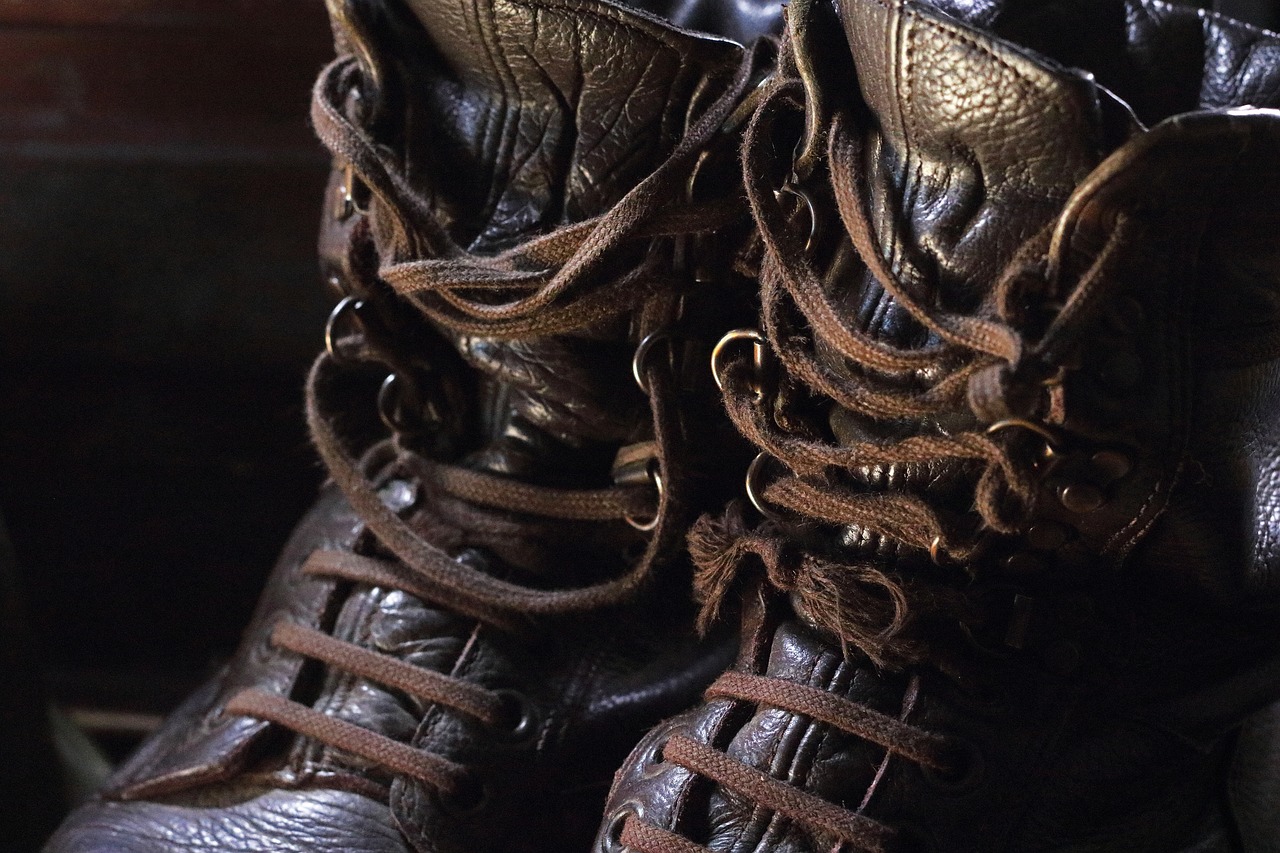
Professional Assessment
When it comes to tackling drainage issues in your home, a is not just a good idea—it's essential. Many homeowners underestimate the complexity of drainage systems, often leading to costly mistakes. By engaging experts, you can gain a comprehensive understanding of the specific problems affecting your property. Professionals utilize advanced tools and techniques to diagnose issues that may not be immediately visible to the untrained eye. For instance, they can identify subtle signs of water damage or improper grading that could lead to significant problems down the line.
During a professional assessment, experts typically follow a systematic approach to evaluate your drainage system. This includes:
- Visual Inspection: Professionals start with a thorough visual inspection of your property, checking for obvious signs of drainage issues, such as pooling water, soggy patches, or erosion.
- Camera Inspection: They may use specialized cameras to inspect underground pipes, providing a clear view of any blockages or damage that could be affecting performance.
- Soil Testing: In some cases, soil tests are conducted to determine how well your soil absorbs water, which can affect drainage efficiency.
After the assessment, homeowners receive a detailed report outlining the findings along with tailored recommendations for repairs or improvements. This can include simple fixes like clearing debris from gutters to more complex solutions such as installing a new drainage system. The peace of mind that comes with knowing your drainage issues are being handled by professionals is invaluable. You not only save time and money in the long run but also ensure that your home remains safe and healthy.
Moreover, regular assessments can help in maintaining the integrity of your drainage system. Just like you would schedule annual check-ups for your health, having a drainage expert evaluate your system periodically can prevent minor issues from escalating into major headaches. So, if you suspect any drainage problems or simply want to be proactive, don’t hesitate to call in the professionals!
- How often should I have my drainage system assessed? It’s advisable to have a professional assessment at least once a year, or more frequently if you notice signs of drainage issues.
- What are the signs that I need a professional assessment? Look for water pooling in your yard, slow draining sinks, or any musty odors in your home, as these can indicate underlying drainage problems.
- Can I perform a drainage assessment myself? While you can do a basic inspection, it’s best to leave comprehensive assessments to professionals who have the right tools and expertise.

Landscaping Adjustments
When it comes to tackling drainage issues, can be a game changer. Imagine your yard as a giant sponge, absorbing water and directing it where it needs to go. If your landscape is poorly designed, it can lead to water pooling in unwanted areas, creating a breeding ground for pests and causing potential damage to your home. By making strategic changes to your landscaping, you can significantly improve water flow and reduce the risk of drainage-related problems.
One effective adjustment is regrading. This involves altering the slope of your yard to direct water away from your foundation. Think of it like tilting a tray of water; if you tilt it the right way, the water flows off rather than pooling in one spot. Ideally, your yard should slope away from the house at a grade of at least 2% (or about 1/4 inch per foot) for the first 10 feet. This simple adjustment can prevent water from seeping into your basement or crawl space, protecting your home from potential water damage.
In addition to regrading, you might consider installing drainage systems, such as French drains or dry wells. A French drain is a trench filled with gravel or rock that redirects surface water and groundwater away from your property. This system works by collecting excess water and channeling it away, much like a river flows around rocks in its path. On the other hand, a dry well is an underground structure that allows water to percolate into the ground, effectively reducing surface runoff. Both options can be tailored to fit the specific needs of your landscape.
Another landscaping adjustment involves planting drainage-friendly vegetation. Certain plants are more adept at absorbing excess water and can help mitigate drainage issues. For instance, native plants with deep root systems can improve soil structure and increase water absorption. Consider incorporating plants like willows or cattails in areas prone to standing water, as they thrive in wet conditions and can help manage excess moisture.
Lastly, adding hardscaping elements such as patios, walkways, or retaining walls can also aid in drainage. These features can help redirect water flow and create defined pathways for runoff, preventing erosion and keeping your landscape intact. Think of hardscaping as the framework of your yard; it provides structure and guides water where it needs to go.
In summary, making thoughtful landscaping adjustments can dramatically enhance your home's drainage system. By regrading your yard, installing effective drainage systems, choosing the right plants, and incorporating hardscaping elements, you can create a more functional and aesthetically pleasing outdoor space that safeguards your home from water-related issues.
- What are the signs that my drainage system needs adjustments? Look for standing water, soggy areas in your yard, or water pooling near your foundation.
- How often should I maintain my drainage system? Regular maintenance is key; check your drainage systems at least twice a year and after heavy storms.
- Can I do landscaping adjustments myself? While some tasks can be DIY, it's best to consult with a professional for significant changes like regrading and drainage installations.
Frequently Asked Questions
- What are the common signs of drainage issues in my home?
Some common signs include slow drainage, unpleasant odors, and water pooling in your yard or around your foundation. If you notice any of these symptoms, it’s crucial to address them early to prevent further damage.
- How can I prevent clogged drains?
Preventing clogged drains can be as simple as regularly cleaning your drains, using drain covers to catch debris, and being mindful of what goes down your sinks. Avoid pouring grease or large food particles down the drain to keep things flowing smoothly.
- What should I do if I suspect a leak in my pipes?
If you suspect a leak, it’s important to act quickly! Check for wet spots, mold growth, or a sudden increase in your water bill. Contact a professional plumber to assess and repair the leak before it leads to more serious damage.
- How does poor drainage affect my health?
Poor drainage can lead to mold growth and standing water, which can attract pests and create unsanitary conditions. This can pose serious health risks, especially for individuals with allergies or respiratory issues.
- Can landscaping changes help with drainage problems?
Absolutely! Making strategic landscaping adjustments, such as regrading your yard or installing drainage systems, can significantly improve water flow and reduce the likelihood of drainage-related issues.
- Should I hire a professional for drainage assessments?
Yes, engaging a professional for a thorough assessment can provide you with tailored solutions and peace of mind. They have the expertise to identify underlying issues that may not be visible to the untrained eye.

